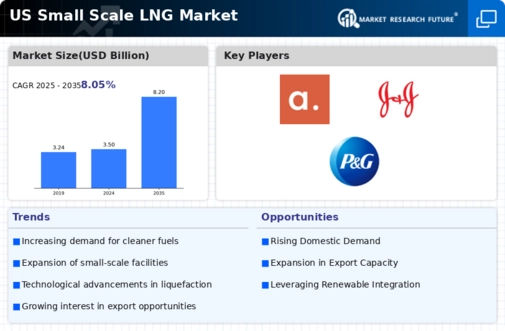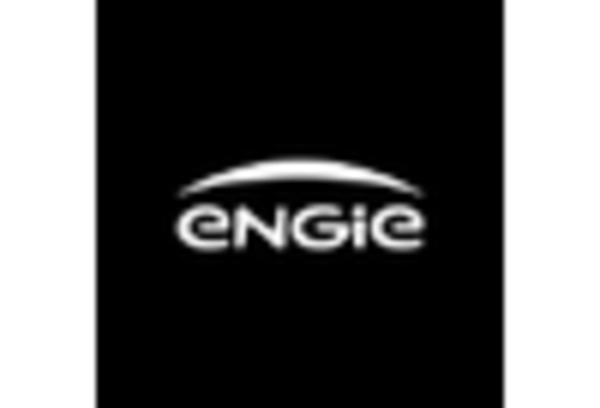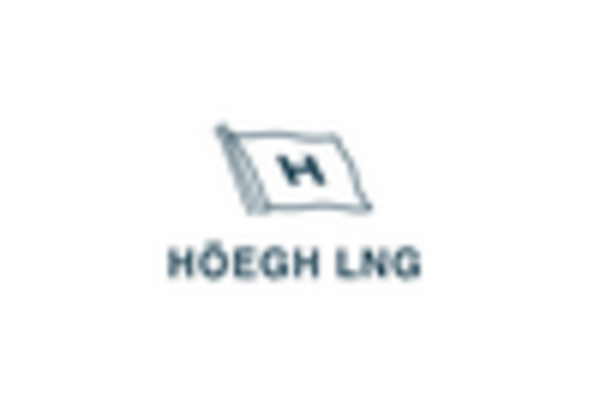Supportive Policy Frameworks
Supportive policy frameworks play a vital role in the growth of the small scale-lng market. Federal and state policies aimed at promoting cleaner energy sources and reducing greenhouse gas emissions are encouraging investments in LNG infrastructure and technology. The US government has implemented various incentives and grants to support the development of small scale-lng projects. These policies not only facilitate market entry for new players but also encourage existing companies to expand their operations. The small scale-lng market is thus likely to thrive under favorable regulatory conditions, which promote the adoption of LNG as a cleaner energy alternative.
Rising Natural Gas Production
The surge in natural gas production in the US has a profound impact on the small scale-lng market. With the US being one of the largest producers of natural gas, the availability of this resource at competitive prices enhances the feasibility of small scale-lng projects. The Energy Information Administration (EIA) reports that natural gas production has increased by over 50% in the last decade, providing a stable supply for the small scale-lng market. This abundance of natural gas not only supports domestic consumption but also positions the US as a potential exporter of LNG, further stimulating market growth.
Infrastructure Development and Investment
Investment in infrastructure is a critical driver for the small scale-lng market. The establishment of LNG terminals, storage facilities, and distribution networks is essential for the effective deployment of LNG solutions. In the US, significant investments are being made to enhance the infrastructure necessary for small scale-lng operations. For instance, the US Department of Energy has allocated funds to support the development of small scale-lng facilities, which is expected to bolster the market. The small scale-lng market is likely to see increased activity as new projects come online, facilitating greater access to LNG and expanding its applications across various sectors.
Growing Demand for Cleaner Energy Solutions
The increasing emphasis on environmental sustainability is driving the small scale-lng market. As industries and municipalities seek to reduce their carbon footprints, the demand for cleaner energy sources has surged. LNG is recognized for its lower emissions compared to traditional fossil fuels, making it an attractive option. In the US, the small scale-lng market is projected to grow at a CAGR of approximately 10% from 2025 to 2030. This growth is fueled by the need for cleaner energy in sectors such as transportation and power generation, where LNG can serve as a viable alternative to diesel and coal. The small scale-lng market is thus positioned to benefit from this shift towards sustainable energy practices.
Technological Advancements in LNG Processing
Technological advancements in LNG processing are reshaping the small scale-lng market. Innovations in liquefaction and regasification technologies are making small scale-lng projects more efficient and cost-effective. For example, modular LNG plants are being developed, which allow for quicker deployment and reduced capital expenditure. These advancements are crucial for the small scale-lng market, as they enable operators to optimize their operations and respond to market demands more effectively. As technology continues to evolve, it is anticipated that the small scale-lng market will experience enhanced competitiveness and growth opportunities.

















Leave a Comment